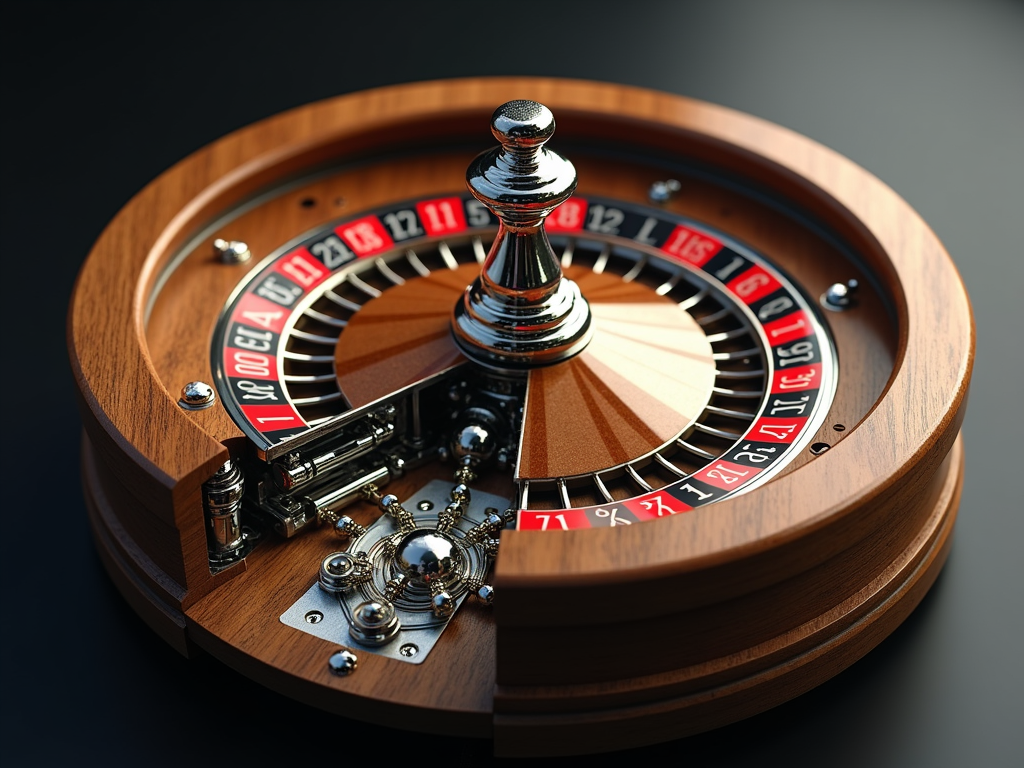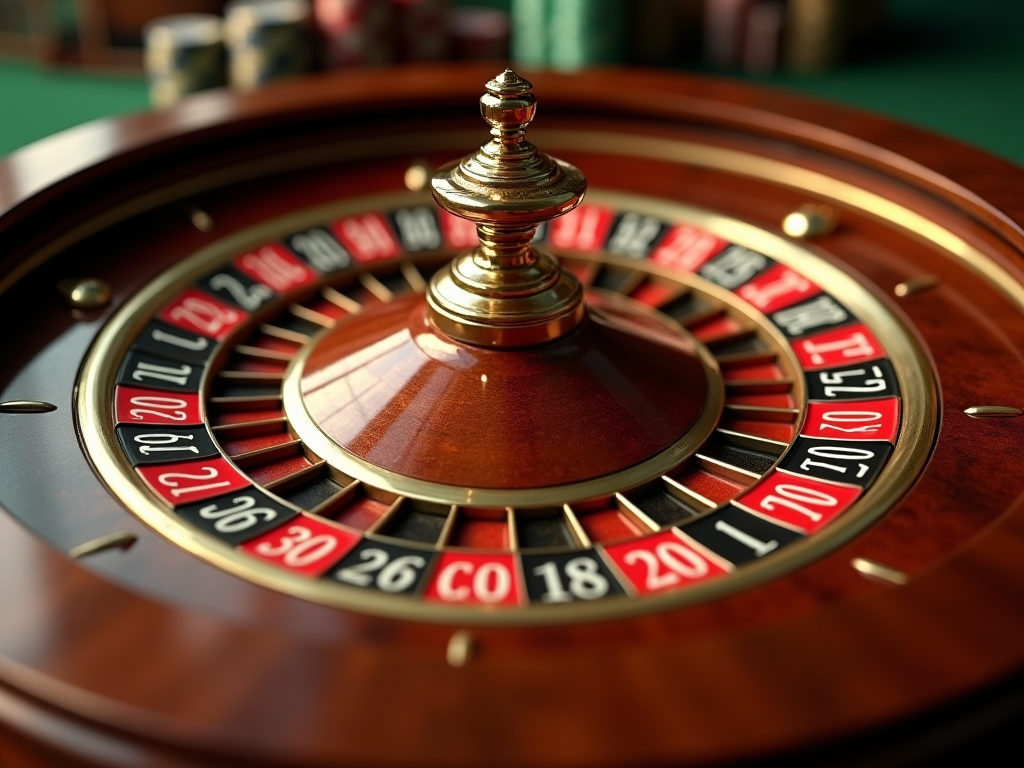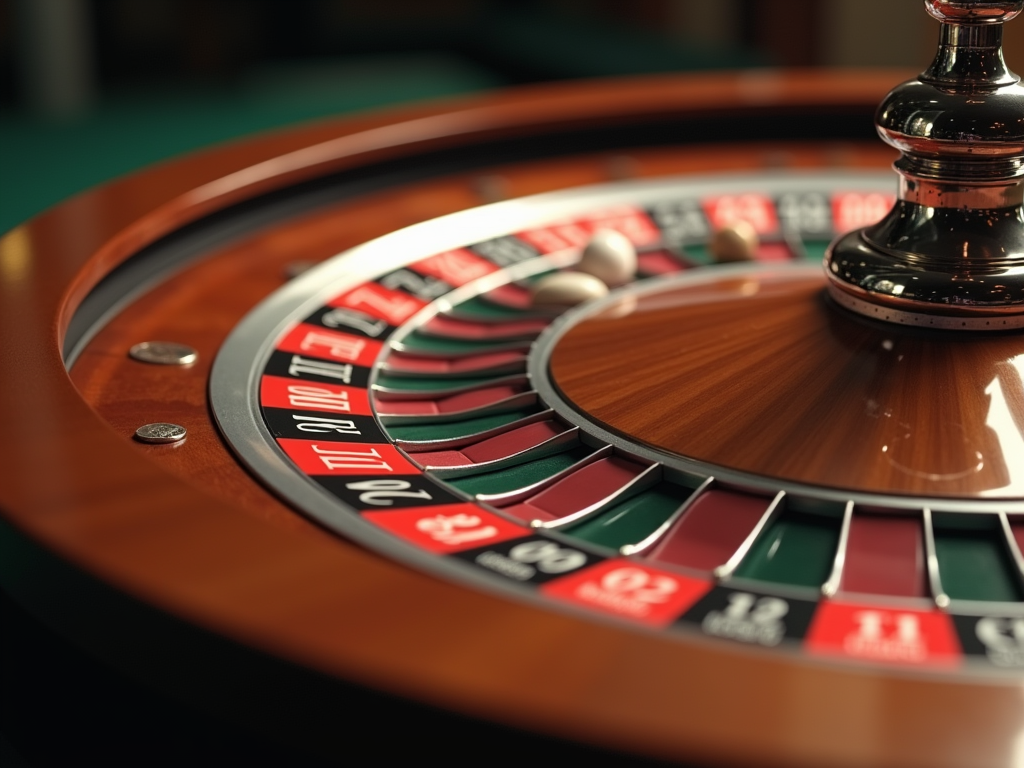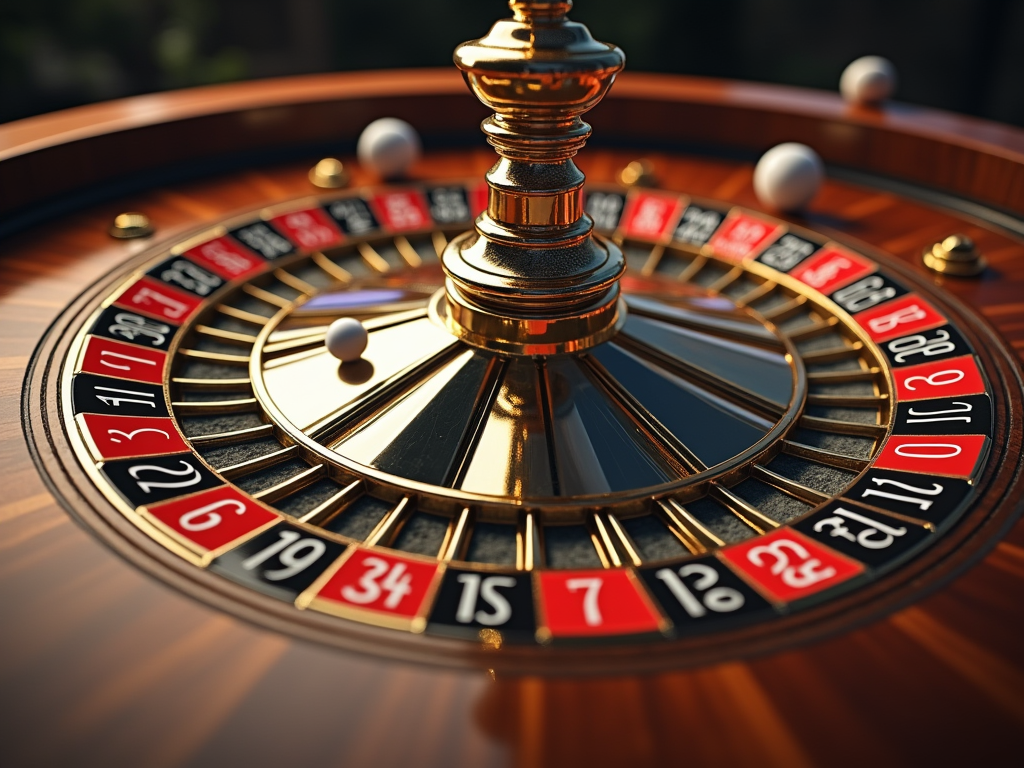Understanding the Engineering Behind a Roulette Wheel
A roulette wheel’s mechanical system merges precision parts with select materials to create random results with each spin. The main assembly includes three critical components: the static outer bowl (stator), the spinning wheel head (rotor), and the central spindle assembly. Ball bearings connect these elements to produce smooth, consistent motion.
Key Takeaways
- Casino-grade roulette wheels span 32 inches and weigh over 100 pounds, built with premium mahogany wood and brass frets
- European wheels contain 37 pockets with a 2.7% house edge, while American wheels feature 38 pockets with a 5.26% house edge
- Multiple physical forces guide the ball’s path — centrifugal force, friction, and gravity act together
- Scalloped frets and exact pocket dimensions create random bounces, giving each number equal probability
- Daily cleaning, weekly bearing inspections, and expert calibration maintain randomness and fairness
Precision in Design and Function
The engineering behind roulette wheels demands strict attention to detail. Each component serves a specific purpose in creating fair gameplay. The weight and size specifications ensure stability, while premium materials resist wear. Physical forces interact naturally with the wheel’s design features to generate unpredictable results.
Comparing European and American Wheels
I’ve found the difference between European and American wheels significant for players. The additional pocket on American wheels doubles the house edge, making European wheels more appealing for serious players.
Importance of Maintenance for Game Fairness
My experience shows that proper wheel maintenance directly impacts game integrity. Regular checks catch potential issues before they affect gameplay. This systematic approach to upkeep maintains the wheel’s reliability and preserves its random nature.
Inside the Precision-Engineered Heart of a Roulette Wheel
The heart of a casino roulette wheel’s mechanical system beats with incredible precision. I’ve found that understanding these core components helps players grasp the true craftsmanship behind this iconic game.
Essential Components and Specifications
The wheel consists of three main parts working in perfect harmony. The static outer bowl, known as the stator, serves as the foundation. Inside, you’ll find the rotating wheel head (rotor) that spins freely on a central spindle assembly. These casino-grade wheels pack quite a presence – measuring 32 inches across and tipping the scales at over 100 pounds.
Engineering Excellence
Deep-groove ball bearings form the backbone of the wheel’s smooth operation. These aren’t your standard bearings – they’re specially designed to deliver consistent, fluid rotation spin after spin. Industry leaders Cammegh and TCS John Huxley have set the bar high with their manufacturing standards, creating wheels that maintain perfect balance and randomness.
Each component requires exact specifications:
- The bowl must maintain perfect levelness to prevent any bias
- Ball tracks need precise machining to ensure unpredictable bounces
- Pocket separators (frets) must have identical heights and angles
- The rotor requires perfect weight distribution for true spins
- Spindle assemblies need exact tolerances for smooth operation
This attention to detail isn’t just about quality – it’s about ensuring fair play. Every measurement, every angle, and every surface finish plays a crucial role in creating genuine random outcomes that players trust. The precision engineering behind these wheels transforms a simple spin into a reliable game of chance that’s stood the test of time.

Materials That Make a Casino-Grade Wheel
Premium Wood Selection
The foundation of a high-quality casino roulette wheel and bowl starts with carefully selected hardwoods. I’ve found that premium mahogany remains the top choice for wheel bowls, offering the perfect balance of stability and natural beauty. Oak and walnut complement the construction, particularly in the wheel’s rotor section, providing exceptional durability while maintaining precise weight distribution.
Metal and Modern Components
The metal elements of a casino-grade wheel play a crucial role in its performance and longevity. Here are the key components that ensure professional-level gameplay:
- Brass frets separate each pocket with razor-sharp precision, creating clean divisions between numbers
- Chrome-plated steel reinforcements add structural integrity to high-impact areas
- Aluminum ball track liners deliver consistent ball rotation and reduced wear over time
- Specialized bearings enable smooth, friction-free spins
- Composite materials in newer models offer enhanced durability in high-stress areas
The finishing touches on these materials are just as important as the materials themselves. I’ve noticed that manufacturers apply multiple layers of protective coatings to the wooden components, creating a glass-like surface that allows the ball to travel smoothly. The metal parts receive specialized treatments to resist corrosion and maintain their luster even after thousands of spins.
The integration of these premium materials creates a wheel that performs consistently while standing up to the demands of continuous casino operation. Each component works in harmony to deliver the random outcomes that make roulette such an exciting game of chance.

European vs American Wheels: More Than Just Numbers
The difference between European and American roulette wheels lies in their pocket count and number arrangement. I’ve found that European wheels contain 37 pockets with numbers 1–36 and a single zero, creating a 2.7% house edge. In contrast, American wheels add a double zero (00), bringing the total to 38 pockets and pushing the house edge up to 5.26%.
Number Patterns and Sequences
The wheel’s design creates perfect balance through careful number placement. On both variants, you’ll find numbers arranged to alternate between high/low, red/black, and odd/even. However, each style follows its own unique sequence—European wheels use a 0-32-15-19 pattern, while American wheels follow a 0-28-9-26 arrangement. Playing roulette requires understanding these wheel differences to make informed betting decisions.
Impact on Gaming Strategy
- European wheels offer better winning odds with 1 in 37 chance on single number bets
- American wheels reduce these odds to 1 in 38 due to the extra pocket
- The higher house edge on American wheels (5.26%) means players lose money faster than on European wheels (2.7%)
- Most betting strategies work more effectively on European wheels due to the lower house edge
- Outside bets maintain nearly 50/50 odds on European wheels, while American wheels reduce these chances
The mechanical differences between these two wheel types have made European roulette more popular among experienced players who understand how the extra zero pocket affects their long-term winning potential.
How the Ball and Track Create Randomness
Creating genuine randomness in roulette depends heavily on the precise engineering of both the ball and track. The ball’s composition makes a significant difference in how it behaves during play. Most casinos opt for balls made from acetal resin, Teflon, or phenolic resin — materials chosen for their durability and consistent performance.
Ball Specifications and Movement
The standard roulette ball comes in two primary sizes: 18mm or 21mm in diameter. These balls typically weigh between 6 to 10 grams, striking the perfect balance for smooth movement around the wheel. The track’s design features a calculated incline that works with the ball’s weight and size to create natural, unpredictable motion.
Physics in Action
The magic happens when the rotor spins at its optimal speed of 15 to 25 RPM. I’ve found that several physical forces work together to create the exciting uncertainty in roulette gameplay and betting outcomes:
- Centrifugal force pushes the ball against the track’s outer edge
- Friction gradually slows the ball’s momentum
- Gravity pulls the ball downward as speed decreases
- Air resistance affects the ball’s trajectory
Casinos often maintain multiple ball sizes and switch between them regularly. This practice prevents players from developing any pattern recognition and maintains the game’s inherent randomness. The combination of different sized balls with varying weights creates countless possible outcomes, making each spin unique and unpredictable.
The track’s polished surface ensures minimal interference with the ball’s natural movement while maintaining enough friction to create the signature bouncing action as the ball loses momentum. This careful balance of forces transforms a simple spin into an engaging moment of chance.
The Science of the Spin
The mechanical brilliance of a roulette wheel lies in its carefully crafted elements that create genuine randomness. The frets, those small metal separators between numbers, play a crucial role in the ball’s journey around the wheel. Their height and profile are precisely calculated to create the perfect deflection angles each time the ball makes contact.
Engineering for Random Results
Scalloped frets are a standout feature in modern roulette wheels. These curved dividers create unpredictable bounces as the ball strikes them, making it nearly impossible to predict where it’ll land. I’ve seen professional roulette players try their luck at pattern recognition, but these scalloped frets effectively eliminate any predictability.
Let’s look at the key components that ensure random outcomes:
- Precision-sized pockets maintain consistent depth and width, giving each number an equal chance of catching the ball
- Inelastic collisions between the ball and wheel parts create erratic bounces
- Air resistance affects the ball’s speed as it travels around the track
- Surface friction between the ball and the wheel track gradually slows the ball’s momentum
The physics of the spin relies on these precise engineering elements. The ball experiences multiple forces as it spins: centripetal force keeps it on its circular path, while friction gradually reduces its speed. As the ball loses momentum, it drops onto the rotating wheel bed, where the frets create those characteristic bounces.
The combination of these mechanical features produces billions of possible paths for the ball. Even tiny variations in initial spin speed or ball placement lead to completely different results, making each spin a unique event.

Maintaining Perfect Balance
Essential Maintenance Practices
Keeping a roulette wheel in pristine condition requires strict maintenance routines. I’ve found that daily cleaning and inspections are fundamental to maintaining fair gameplay in professional roulette operations.
The installation process starts with precise leveling – even a fraction of a degree off can create bias in the wheel’s performance. I recommend using multiple spirit levels during setup and checking them regularly throughout operation. The wheel head must sit perfectly horizontal to prevent the ball from favoring certain pockets.
Let me share the key maintenance elements that ensure optimal wheel performance:
- Daily surface cleaning of the ball track and pocket separators
- Weekly bearing lubrication and movement checks
- Monthly complete level verification
- Quarterly detailed inspection of all mechanical components
- Bi-annual professional calibration and adjustment
The bearings are particularly crucial – they’re the heart of smooth wheel operation. Poor bearing maintenance leads to inconsistent spins and potentially predictable patterns. I make sure they’re properly lubricated and checked for wear regularly.
Modern wheel design has evolved to combat dealer signature – the unconscious patterns that dealers might develop in their spinning technique. Features like randomized pocket depths and varying separator heights help eliminate any unintended influence on game outcomes.
Historical cases of biased wheels have shaped today’s strict maintenance protocols. In the 1800s, players like Joseph Jagger famously exploited wheel imperfections to win substantial sums. Today’s maintenance standards prevent such biases through regular testing and adjustment of all mechanical components.
The rotor must spin with perfect fluidity, free from any wobble or resistance. I check the smoothness of rotation by observing the wheel’s deceleration – it should be gradual and consistent. Any unusual sounds or movement patterns signal the need for immediate attention.
These comprehensive maintenance procedures protect both the casino and players by ensuring truly random outcomes. Each spin should be independent and unpredictable, which can only happen when the wheel operates at peak mechanical efficiency.
Sources:
Cammegh Ltd. (Manufacturer website information on wheel construction)
TCS John Huxley (Manufacturer website information on roulette equipment)
Article: “How Does A Roulette Wheel Work?” – Casino.org
Book: “Getting the Edge at Roulette” by Christopher Pawlicki
Article: “Roulette Wheel Secrets” – 888casino Blog





